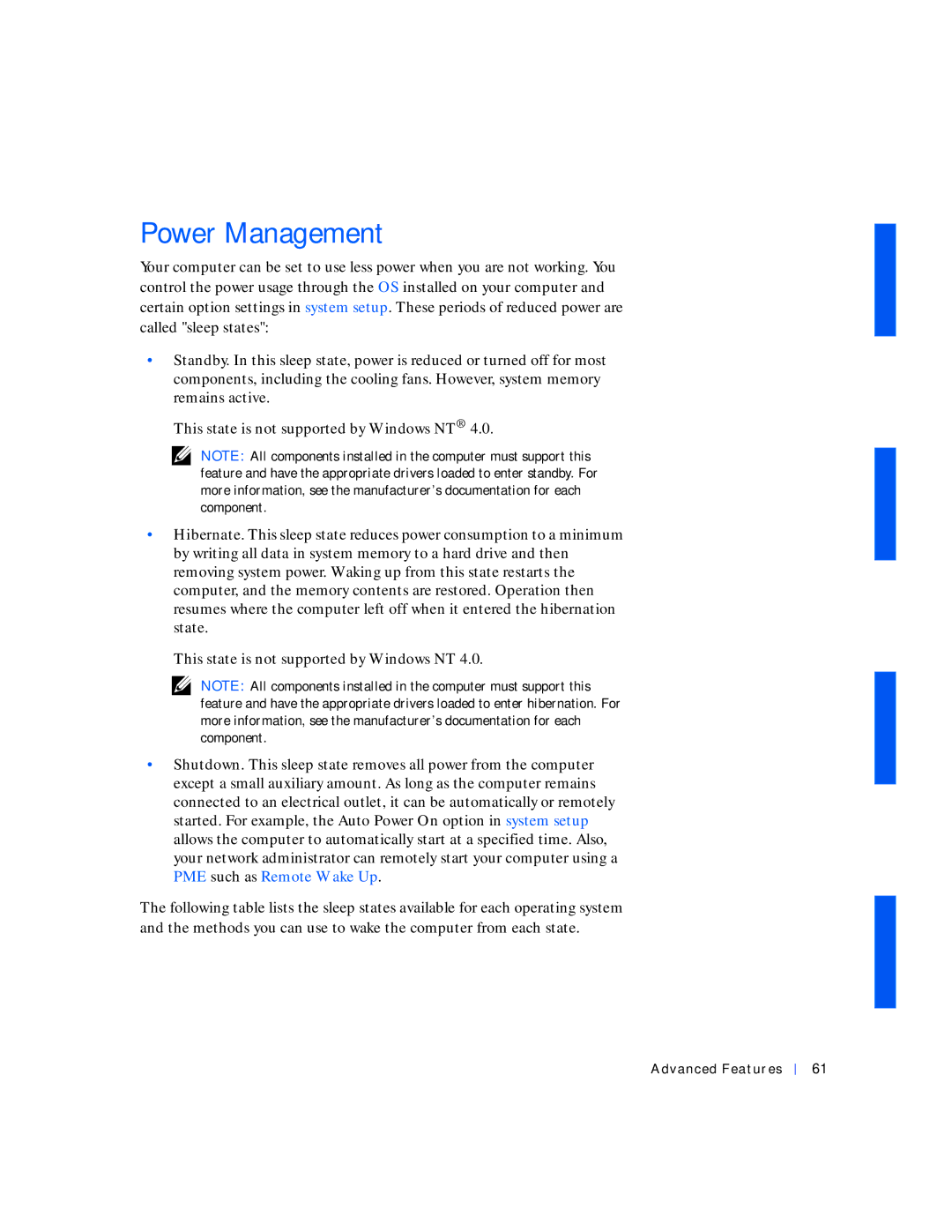
Power Management
Your computer can be set to use less power when you are not working. You control the power usage through the OS installed on your computer and certain option settings in system setup. These periods of reduced power are called "sleep states":
•Standby. In this sleep state, power is reduced or turned off for most components, including the cooling fans. However, system memory remains active.
This state is not supported by Windows NT® 4.0.
NOTE: All components installed in the computer must support this feature and have the appropriate drivers loaded to enter standby. For more information, see the manufacturer’s documentation for each component.
•Hibernate. This sleep state reduces power consumption to a minimum by writing all data in system memory to a hard drive and then removing system power. Waking up from this state restarts the computer, and the memory contents are restored. Operation then resumes where the computer left off when it entered the hibernation state.
This state is not supported by Windows NT 4.0.
NOTE: All components installed in the computer must support this feature and have the appropriate drivers loaded to enter hibernation. For more information, see the manufacturer’s documentation for each component.
•Shutdown. This sleep state removes all power from the computer except a small auxiliary amount. As long as the computer remains connected to an electrical outlet, it can be automatically or remotely started. For example, the Auto Power On option in system setup allows the computer to automatically start at a specified time. Also, your network administrator can remotely start your computer using a PME such as Remote Wake Up.
The following table lists the sleep states available for each operating system and the methods you can use to wake the computer from each state.
Advanced Features
61
